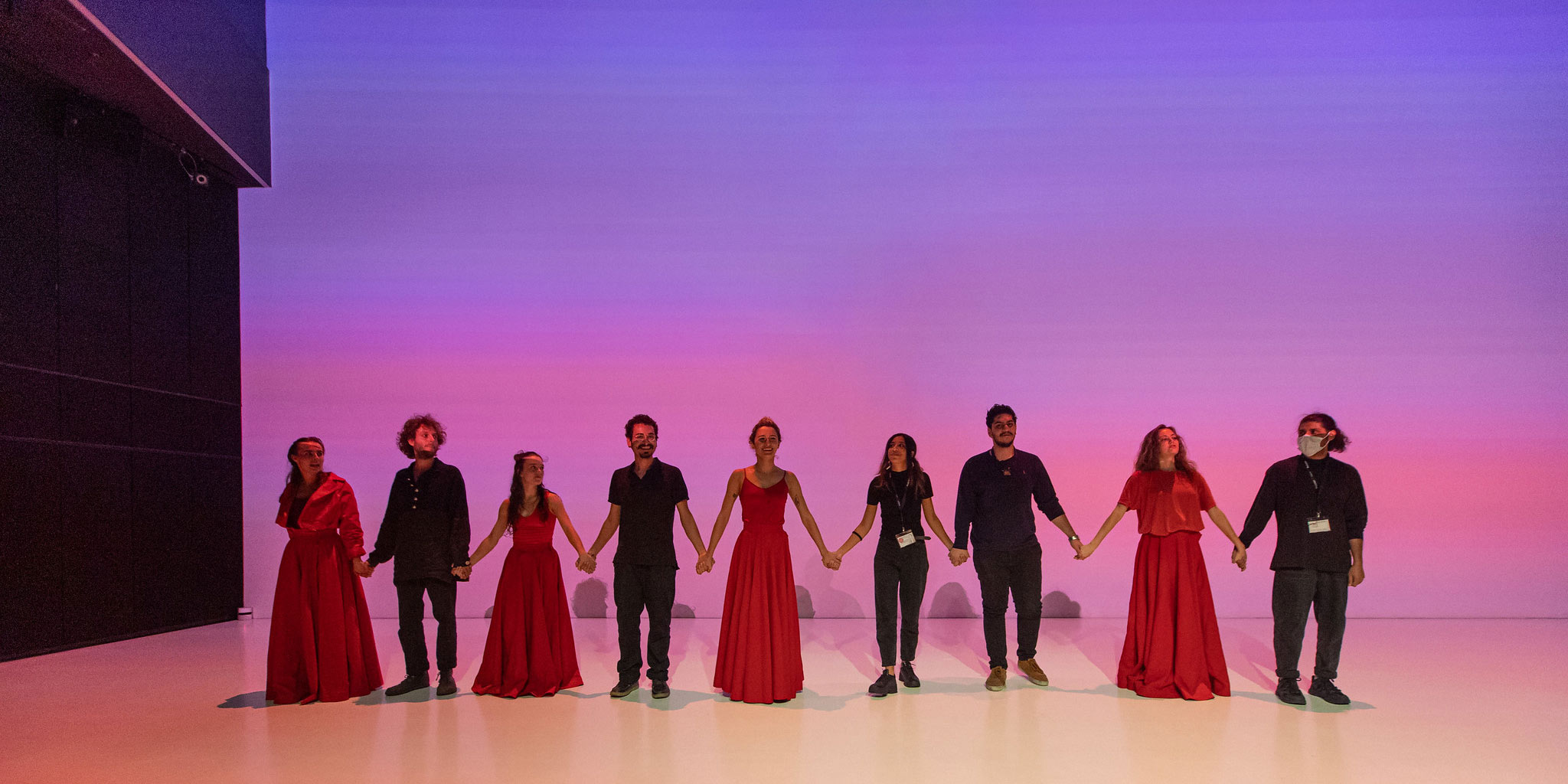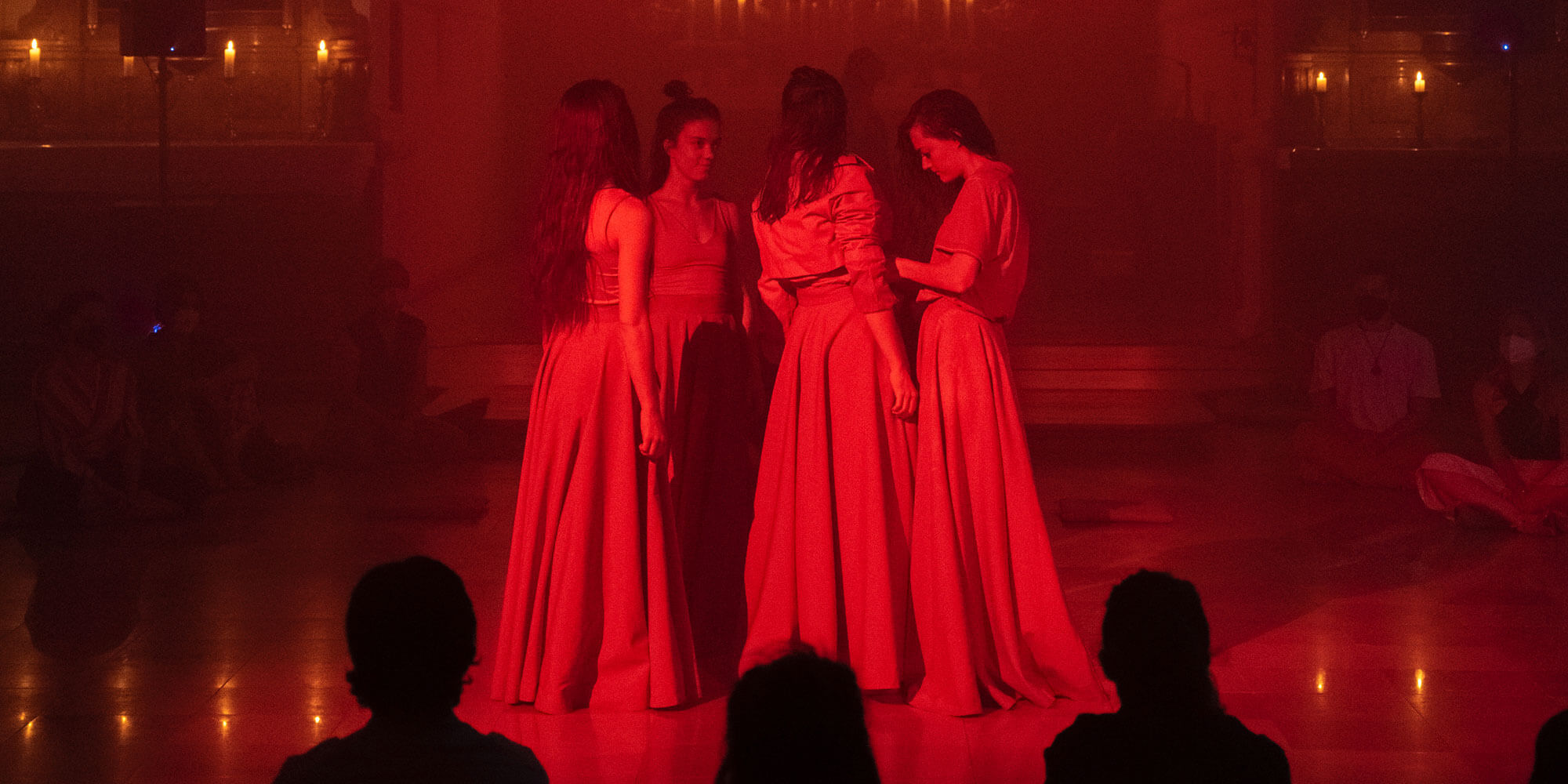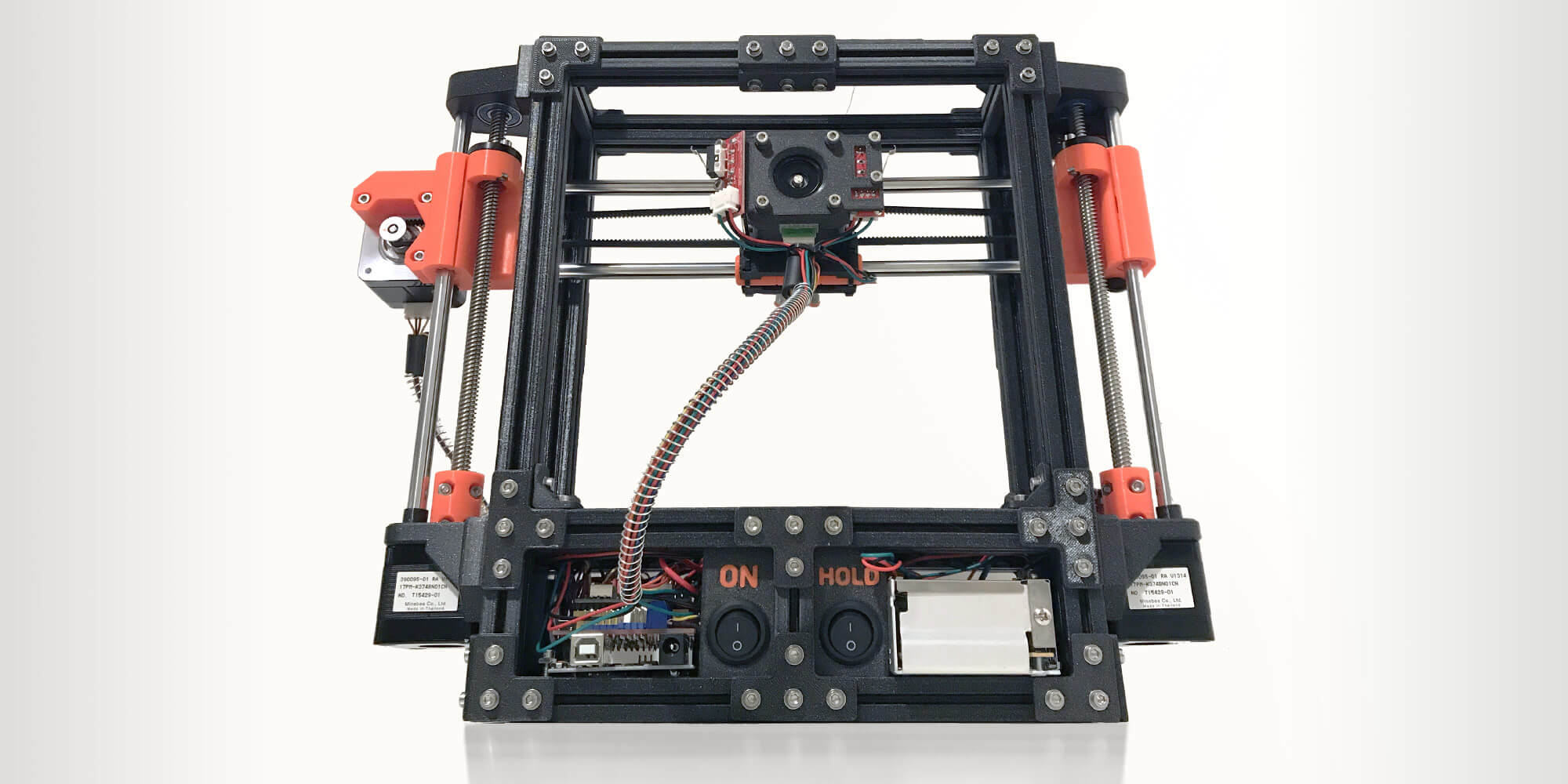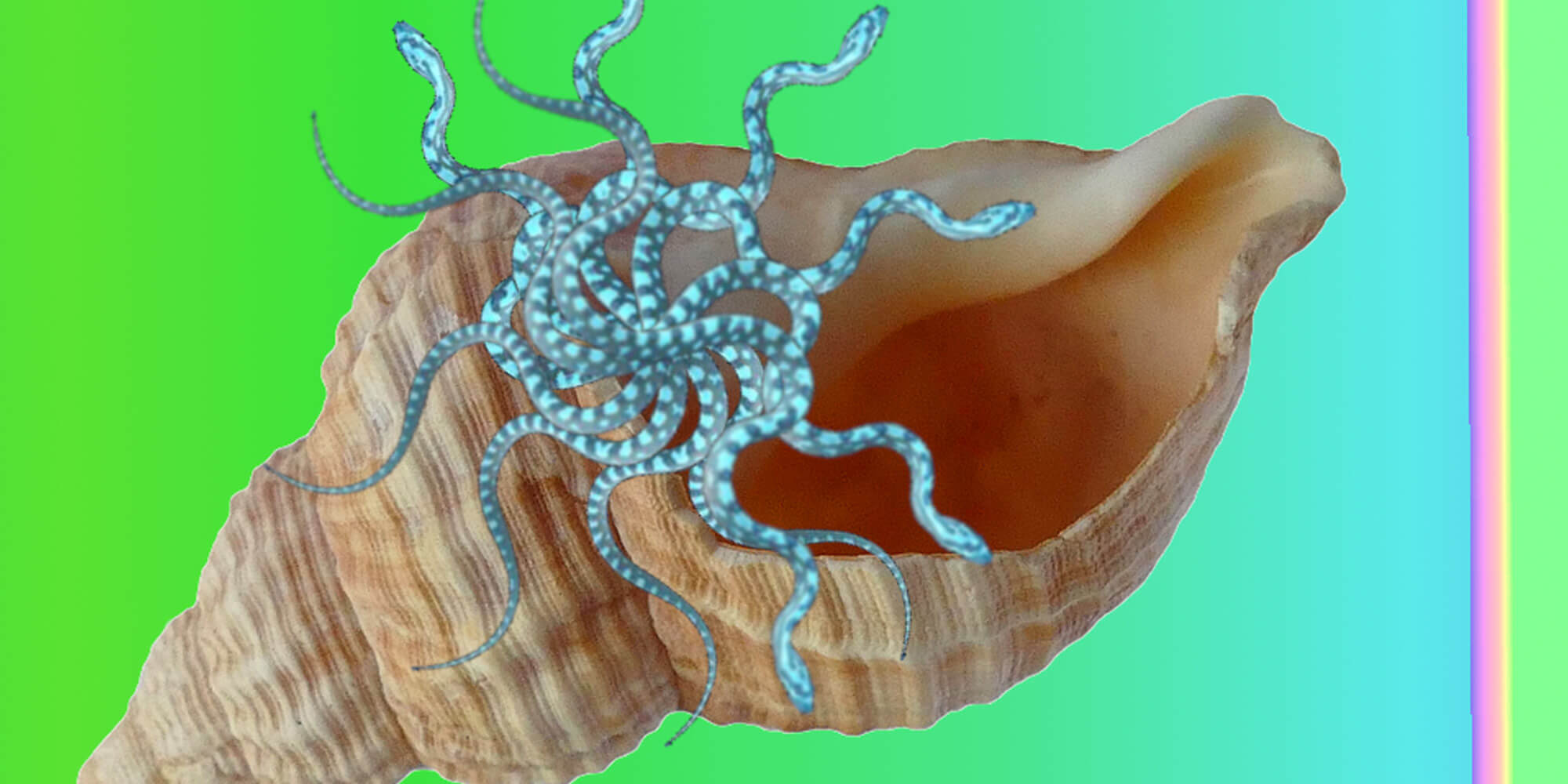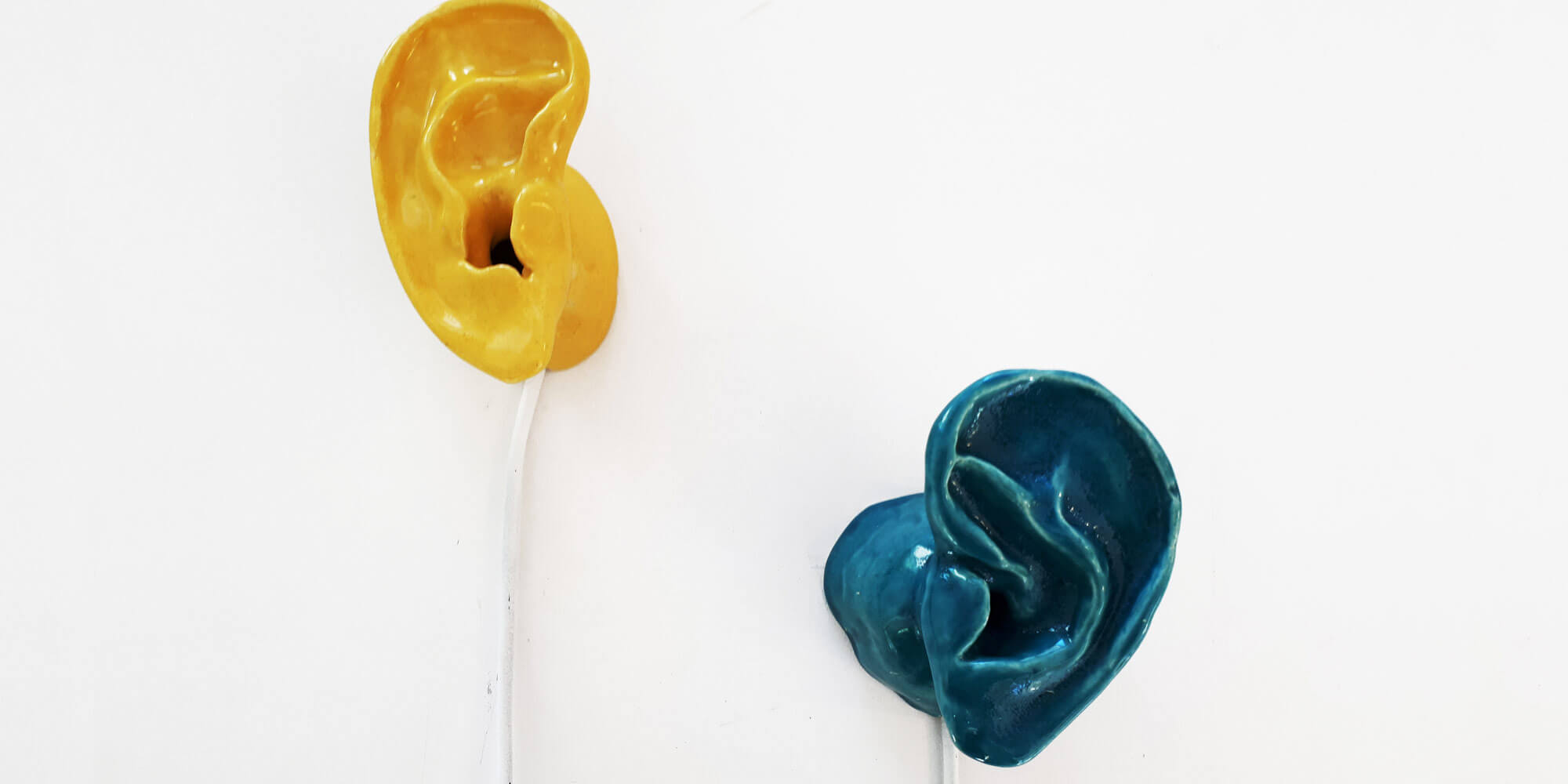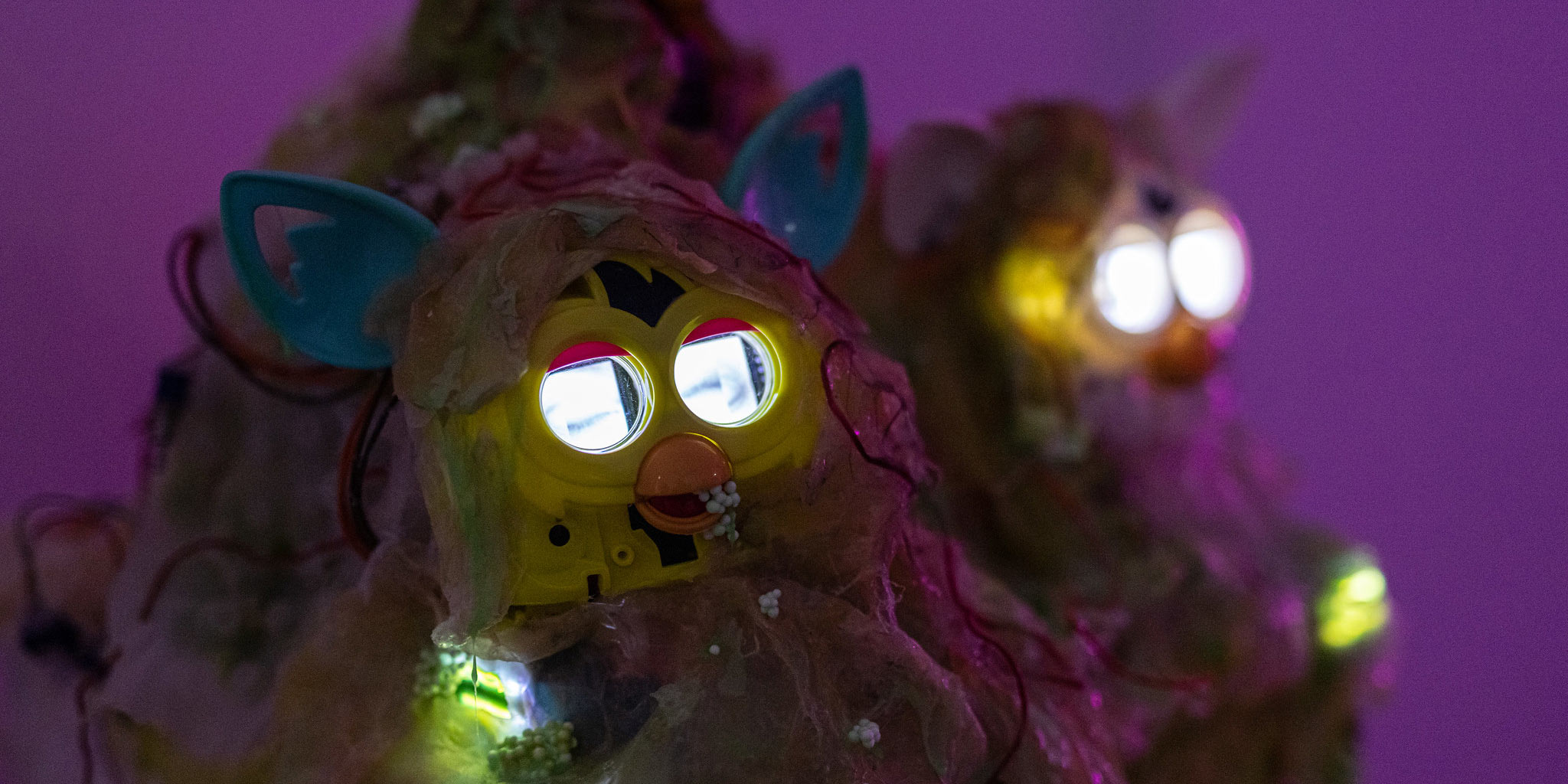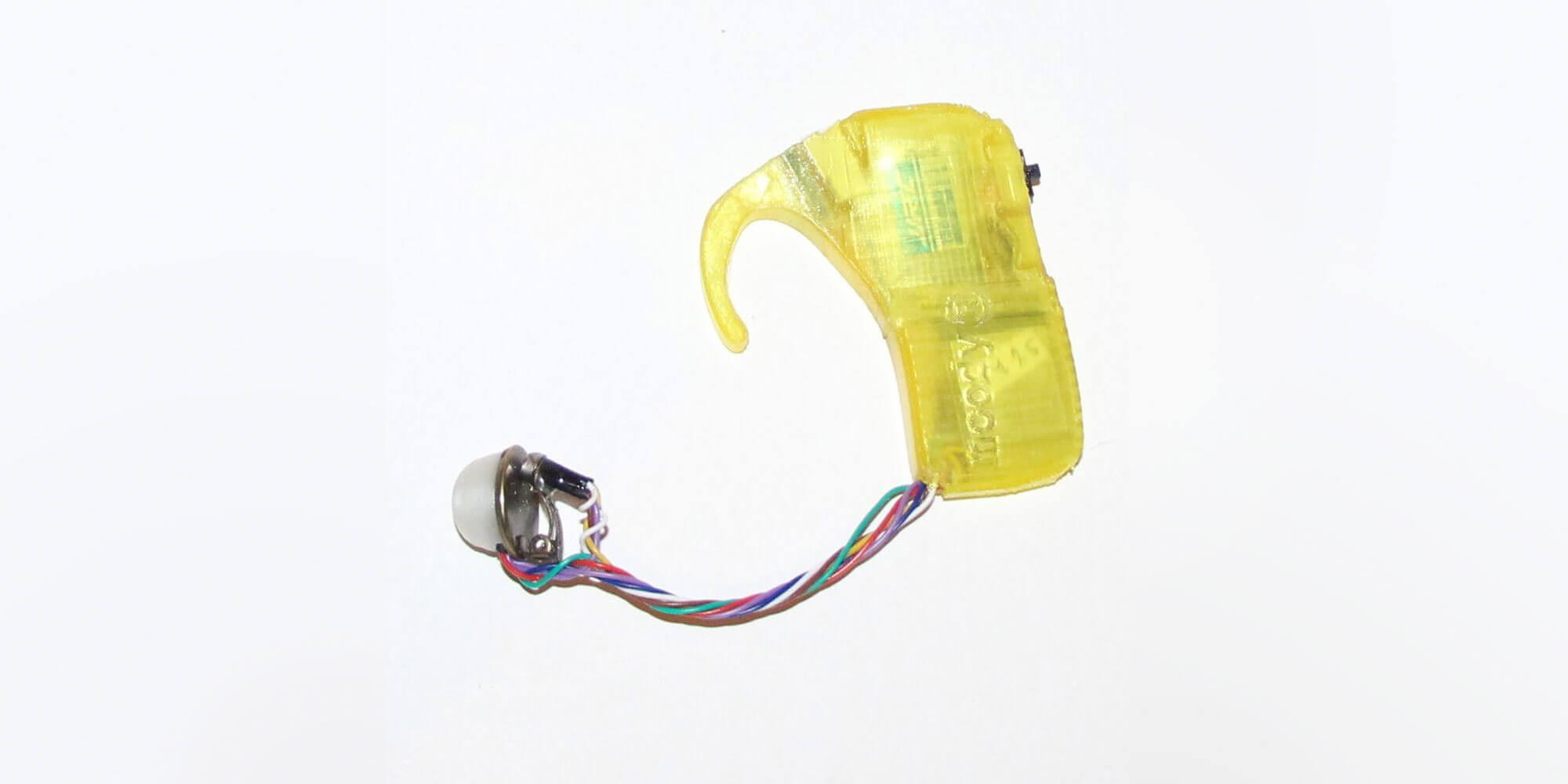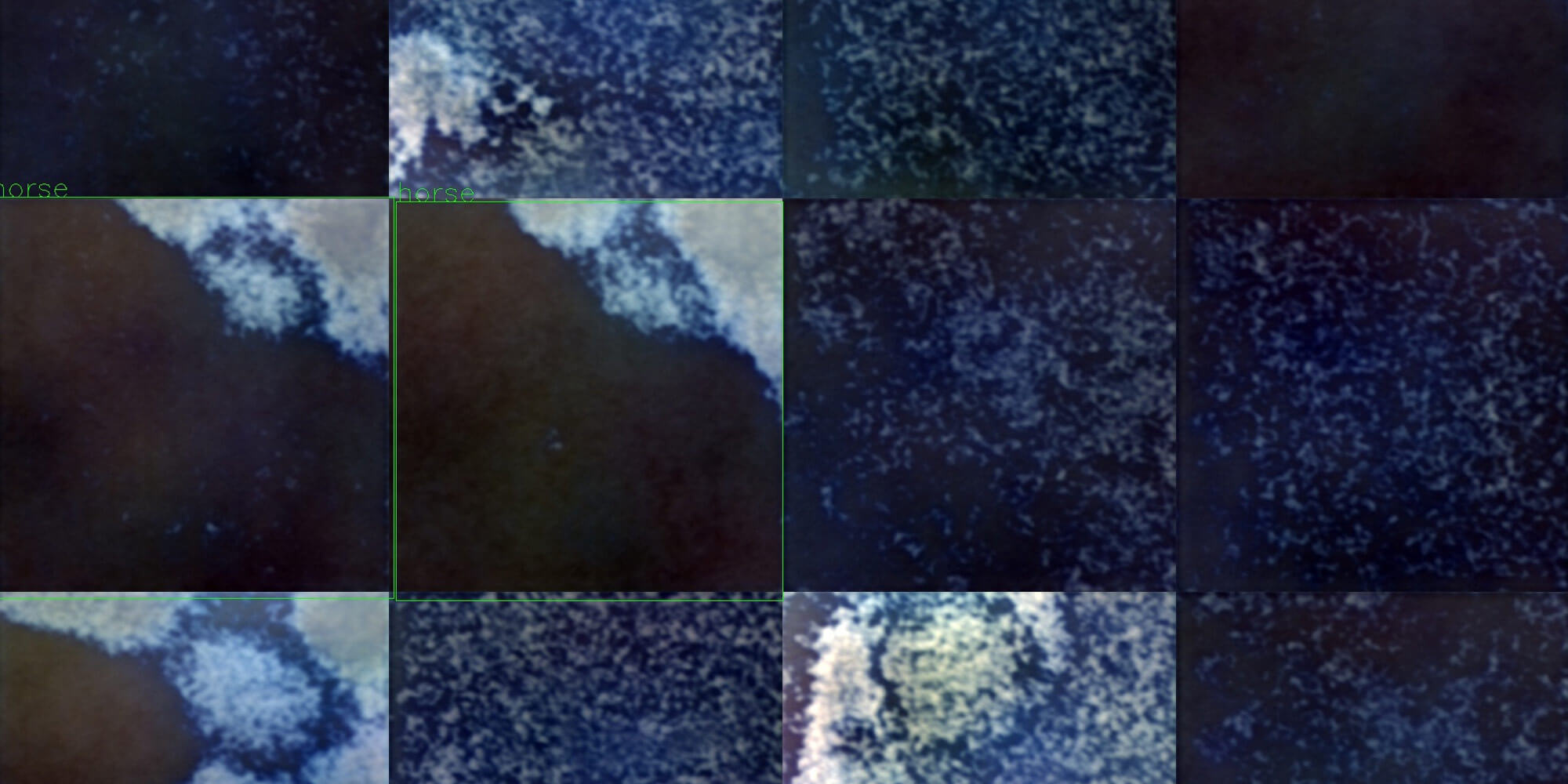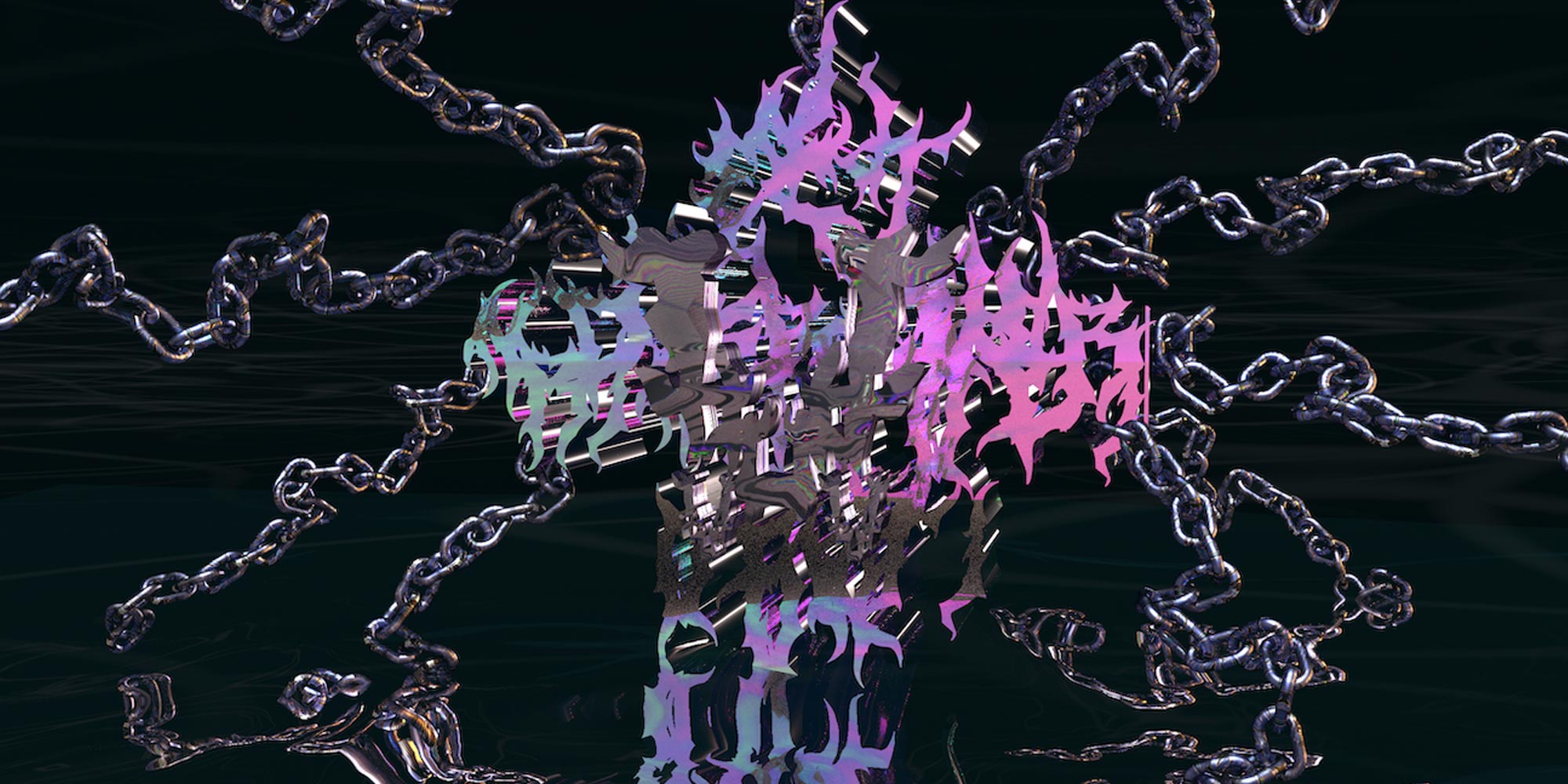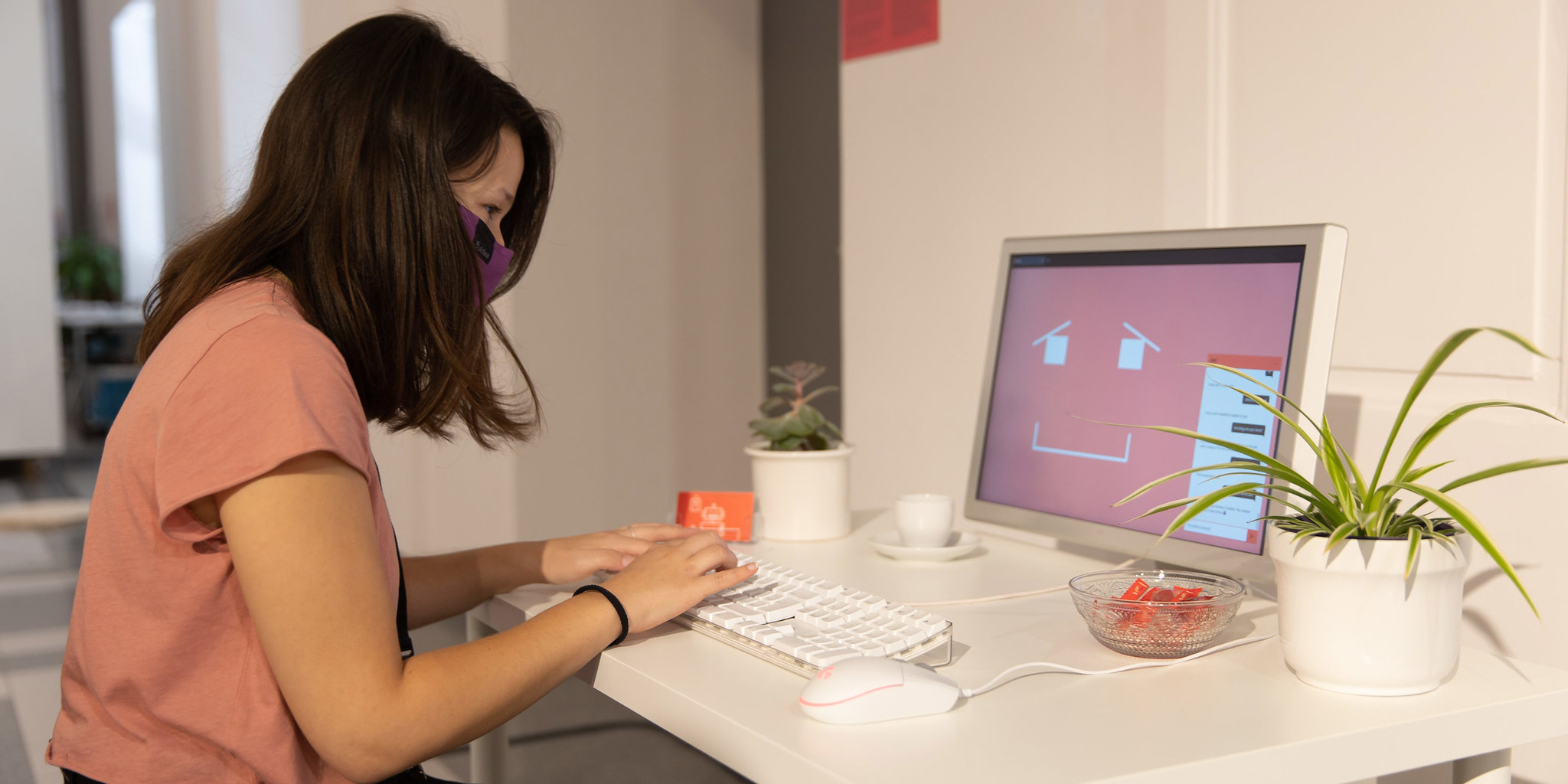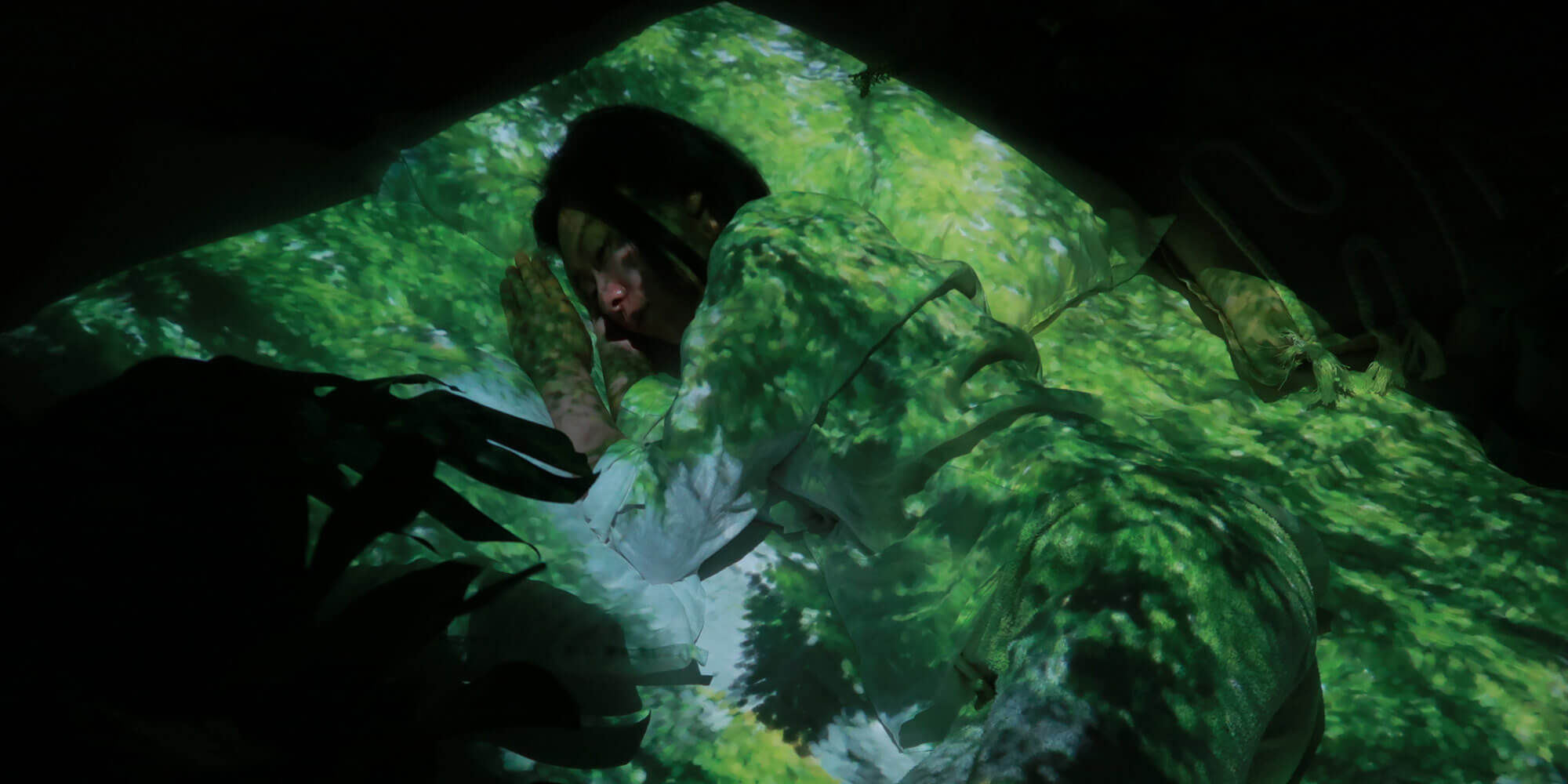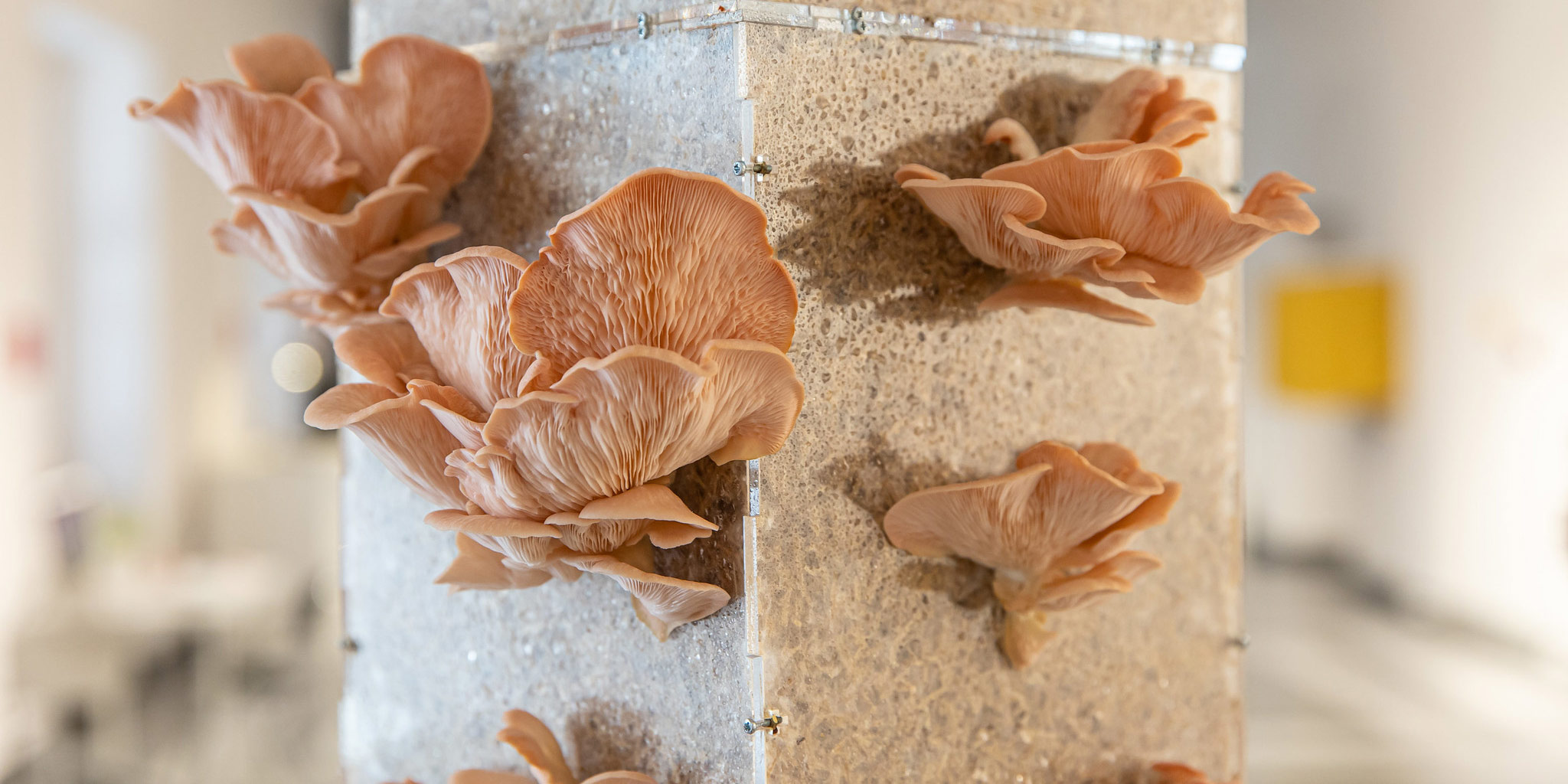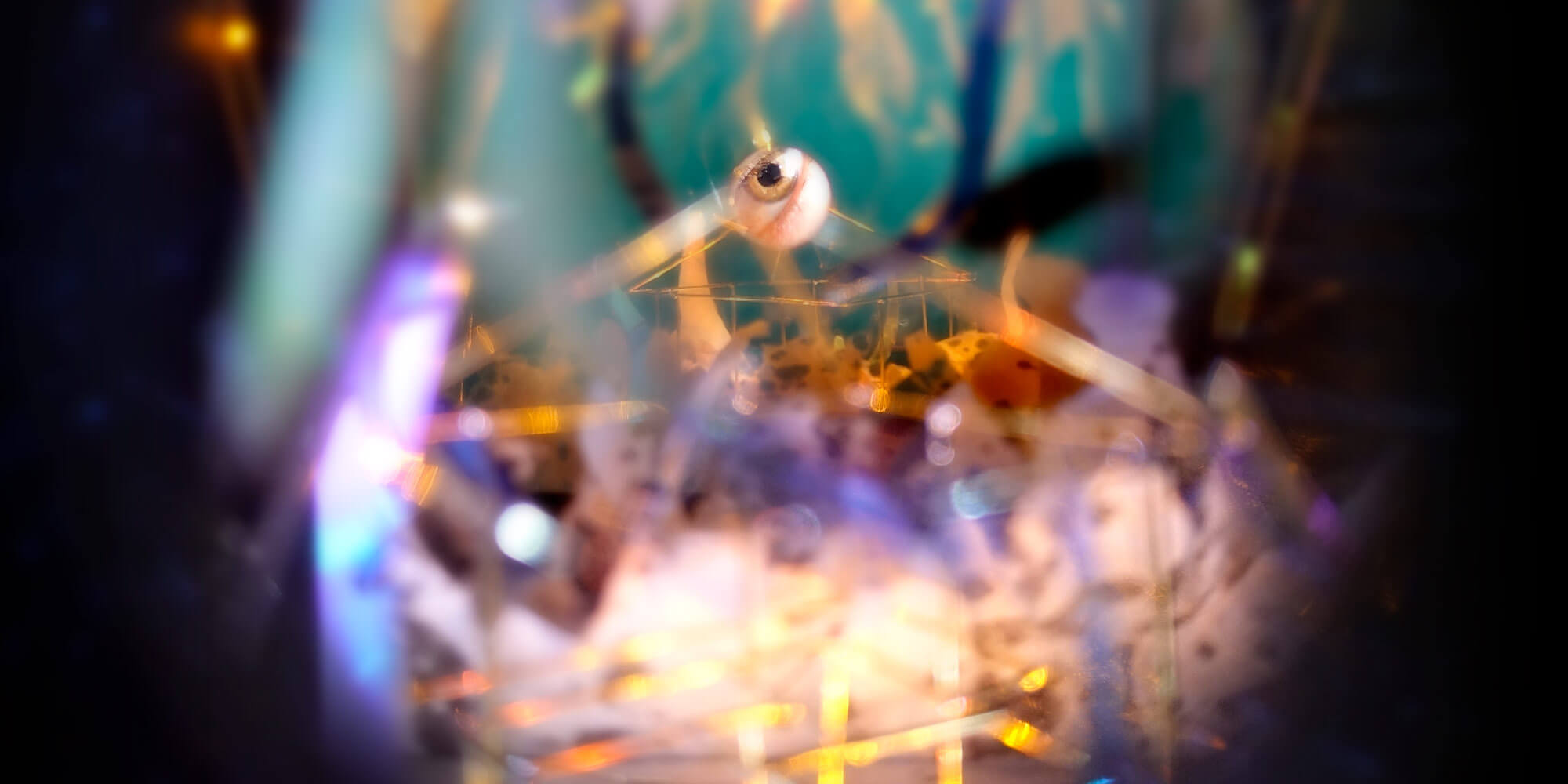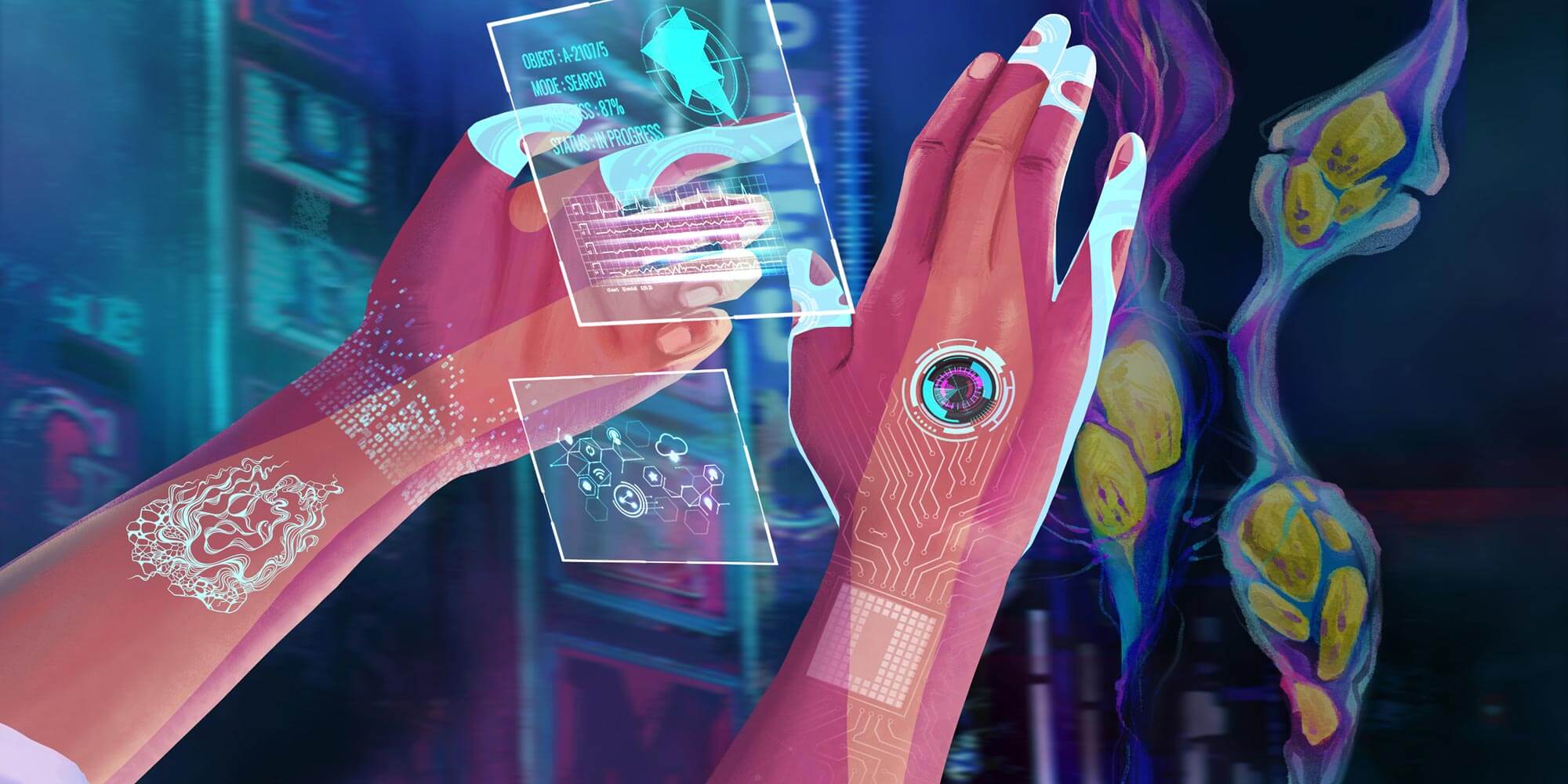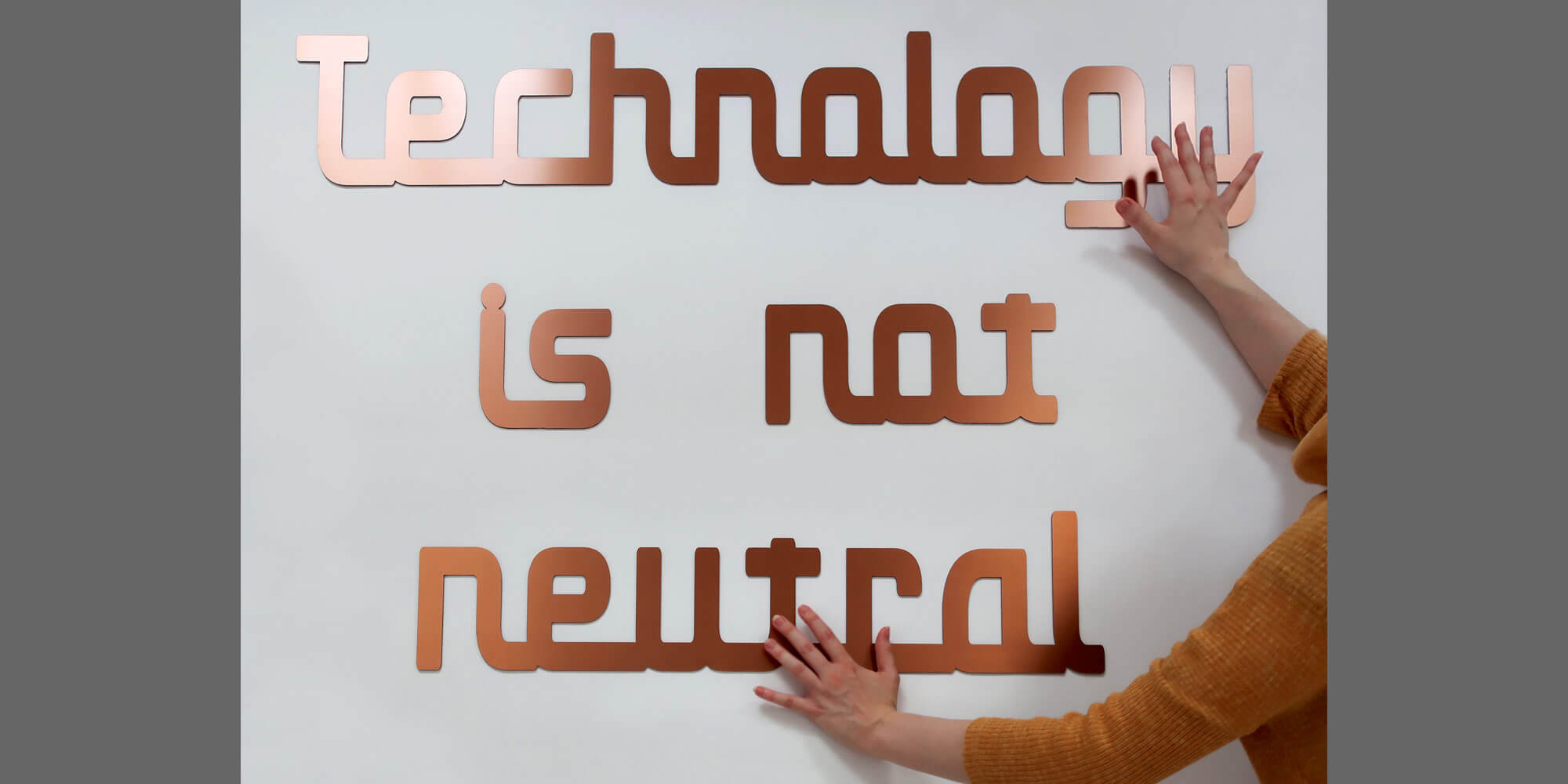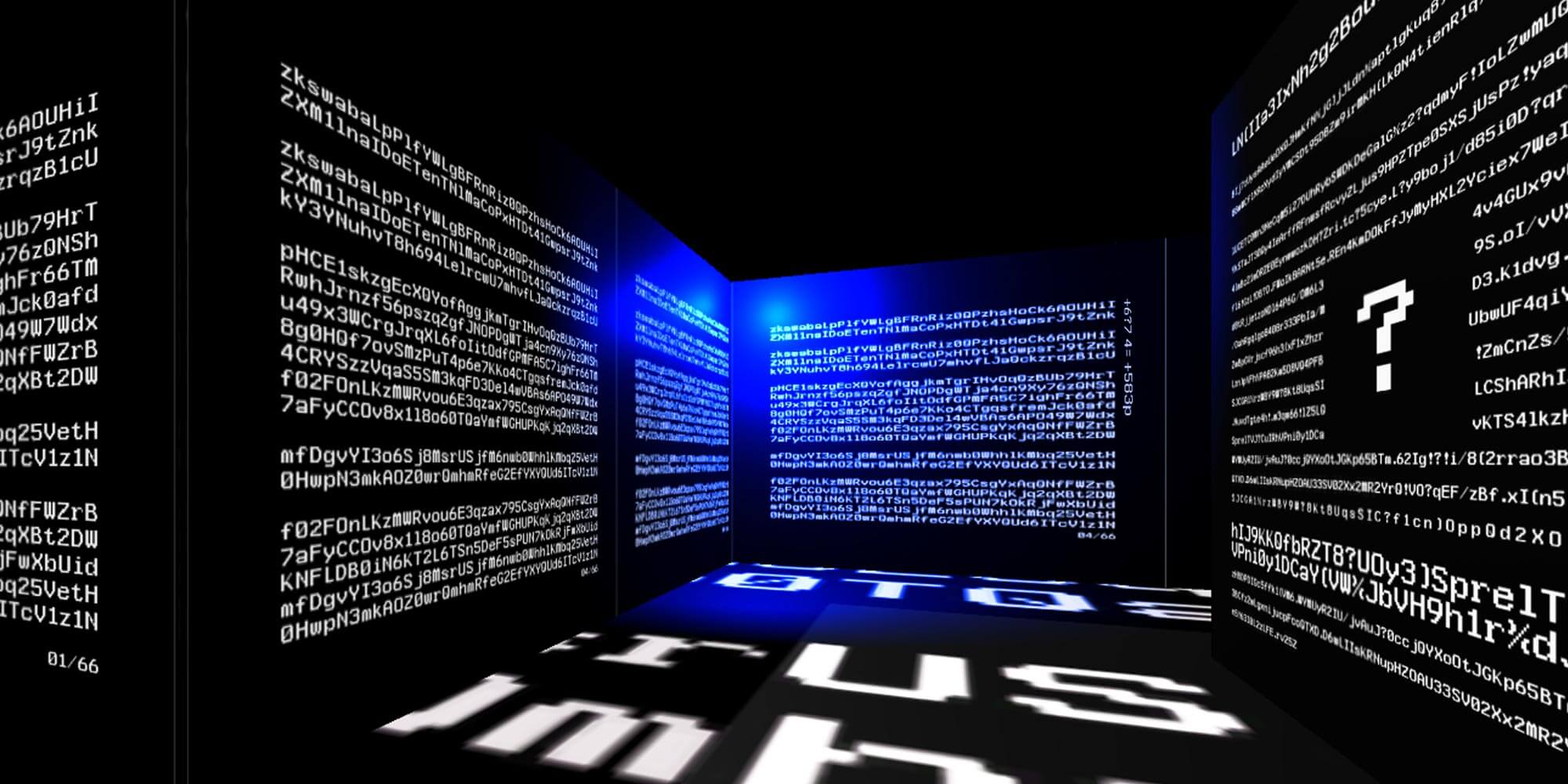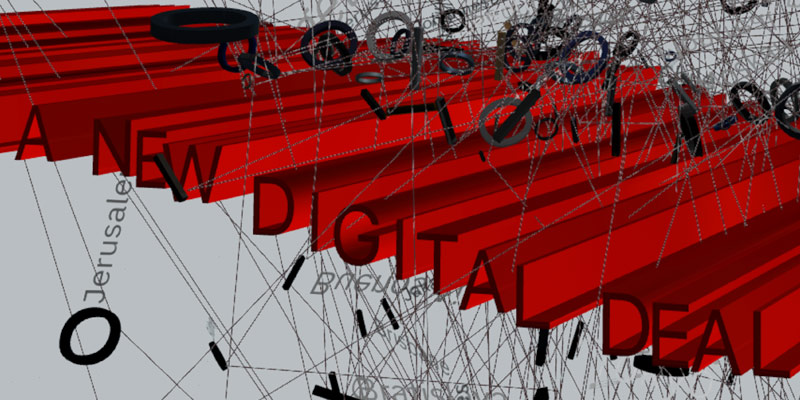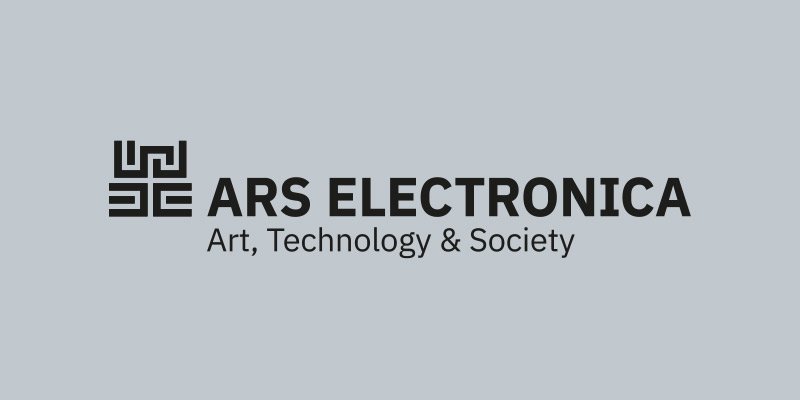Faculty: Christa Sommerer, Laurent Mignonneau, Manuela Naveau, Fabricio Lamoncha, Davide Bevilacqua, Gertrude Hörlesberger
Contemporary artists, designers and inventors are creating new connections and systems, exploring how silicon, organic and even speculatively alien forms of life are entangling, mutating, evolving. What can these new entities and relationships look like? Are they friendships and collaboration, or competitions and conflict? For these new exchanges we need new languages: programmable, aesthetic, interspecies, non-human and post-scientific. The emerging hybrid and cyborg entities join and celebrate shamanistic and nonverbal traditions, hidden cultures, with magical symbols, energies and fictions. A culture or even a cult of symbiosis is required, a fusion between old and new ways of dealing with reality. We call to disrupt and disengage from destructive profit-oriented technologies and systems which are based on oppression, manipulation and quantification. For our survival and the future viability of life on our Goldilocks Zone planet, we believe that less anthropocentric knowledge systems must arise, and that more caring technologies are required.
Observing how contemporary tools often contain the traces of past traditions and knowledge, we wonder what has happened to the wisdom that was left behind. The logic of the all-encompassing scientific method, upon which most contemporary technologies are grounded, overshadows non-scientific, non-quantifiable, hybrid or alien expertise and skills from non-dominant cultures. As a consequence, the ancient, folkloric, pre-industrial strategies to enhance and foster life and to confront the challenges of the future, do not find enough space in the modern cultures of a faultless digitalization.
As AI becomes ubiquitous and more than just a buzzword, it starts to affect our daily lives and artistic practices. We need to have a forensic look at the beliefs behind the new tools and creative techniques engendered by the cults of technology. One approach is to fully embrace and test the aesthetic capabilities of quasi-unlimited combinations and database driven creations. Another is to investigate and measure their social impact, and to interrogate the role we assign to our technology and to creativity as a whole.
Creative thinkers and artists want to look behind the curtain and unveil what is hidden beneath the layers of AI, machine learning, automation and surveillance technologies. Like detectives or inspectors, they question the “black box” to discover how and why these intelligent systems make certain decisions, what these decisions mean and for whom they are fundamentally being made.
Students of Interface Cultures have developed works which combine current technologies with ancient, humanistic and esoteric practices, delving into topics such as, divination, twirlings, the subconscious/unconscious, secrets, rituals, leisures, energies, contemplation, as well as cults, both old and new.
Credits
Faculty: Christa Sommerer, Laurent Mignonneau, Manuela Naveau, Fabricio Lamoncha, Davide Bevilacqua, Gertrude Hörlesberger
Production/Design Team: Kevin Blackistone, Sara Koniarek, Iosune Sarasate Azcona, Indiara Di Benedetto, Juan Pablo Linares, Kevan Croton
A________MANIFESTO
Funda Zeynep Ayguler (TR)
A collection of manifestos, dating from the 17th century until today, has been transformed into 3D shapes by using text mining techniques that reconstruct linguistic contexts of words from raw text. Mycelium fungus is used to create an organic living sculpture out of this digital hybridization. The AR experience is based on the points of the data cloud, in which every dot represents a word of the raw text. Inside an abstract vector space derived from real-world language corpora, words become points in a n-dimensional space, where algebraic calculations operate on the syntactic and semantic creation of language.Grounded on Donna Haraway’s work, a combination of transformerbased architectures is used to generate a new manifesto that mimics human-written text.
[2m]
Kevin Blackistone (US)
What distances do we keep between ourselves and others? How do we vary our movements in response to them? What dimensional requirements do we maintain in our personal environment?
These questions have become strangely and newly manifest throughout the past year’s safety protocols and lockdowns. Here, they are condensed into a form of radial rotary music box responding to the distances of those entering, while sonically expanding their presence to occupy an acoustic space larger than their physical forms.
CacheDash
Tiio Suorsa (FI)
Cache is one of the most intimate parts of our devices. It resembles our subconscious mind with looping memories in the background while meeting other human species. The project CacheDash is part of an exploration of how to be a human navigating between virtual and actual realities. Developed for the Ars Electronica Deep Space, it invites visitors to release and paint their hidden thoughts.
Post-Dervish Chant
A transdisciplinary performance situated as a contemporary research of traditional Dervish Dance methods.
Smirna Kulenović (BA) & TAZ 22, Indiara Di Benedetto (IT)
The process of repetitive whirling in traditional Dervish Dance extends into an experimental, novel and spontaneous movement vocabulary that attempts to embody the relationship between diffraction, memory and vulnerability in human-non-human materialities. The processual employment of dance, vocalisation or dance-like movement becomes a form of inquiry, rooted in personal documentary approaches done by each participating artist.
CNC Punch Needle Machine MK-1
Hess Jeon (KR) & Seo Son (KR)
This embroidery machine, similar to those that already exist in mass manufacturing warehouses, is here presented as an artwork, redirecting the artist’s questions from “results” to “processes”, from “means of production” to “reason”, emphasizing the artists’ ideas and intentions in the use of open-source technologies. All components in this project originate from other existing open-source projects, therefore, this artwork is not solely a product of the artist’s creativity, but an example of collective construction. The CNC Punch Needle Machine dreams of collective evolution over individual enlightenment. It “punches” a thread into a stretched canvas, and, dot by dot, it „prints out“ its own messages.
Sonic Utopias
Daphne Xanthopoulou (GR)
Sound has always been associated to divination practices. In a time when the imagination is rendered short by a prevalent fixation on dystopian futures, we tune into the resistant voices that create an outside to this totalized world by nurturing structures of individual and communal resistance. Sonic Utopias is a sonic fiction series of utopian narratives and tales of subversion from a (not so) distant earth. Five seashells contain another narrative about the future, while the sand refers to the childlike practice of building sandcastles; a metaphor for the necessity of world-building in frail times.
Ear to Ear
Anaïs Lossouarn (FR)
Ear to Ear plays a collection of secret stories told in many languages by people of different nationalities. Ceramic ears punctuate the space, dots of color crossing the walls. As we approach them, we can hear voices telling these intimate stories. Lend an ear to the wall and you will share their secret lives. In a more secluded place, the „confessional“, you are invited to share your own secrets, fragments of your story, that will be included in the installation and played through the ears in the exhibition space.
Eerie Me
Barbara Jazbec (SI)
Eerie Me is a creature based on the symbiosis of memories and imagination of a Furby and the artist herself. Happy and traumatic memories create a memento that spectators can relate to. At its time of commercialization, the interactive toy “Furby” was original and technologically advanced, and fascinating not only for kids, but as the cultural artifact that is still recognizable today. The artist explores personal ways to hack the toy and expand its identity by including parts of her body and personality in a hybrid creation and transcending her life into a new existence.
Exciting Research
Jo Caimo (BE)
Via an ear clip, the MOODY® device measures excitement, while a light indicates its color/level. The scale goes from blue (low excitement) to red (high excitement). With the data of people’s excitations and mutual distances, algorithms are developed to visualize and even stimulate the „energies between people“. At the workshop, devices can be built, algorithms upgraded and tested, and the jewel embodied as we interact with others. Topics on the device manual can be added, and user policies discussed.
FUTUREFALSEPOSITIVE
Kristina Tica (RS)
FUTUREFALSEPOSITIVE is based on StyleGAN and object recognition algorithms applied to the ritual of Turkish coffee mug reading. 15,000 real-life and generated images are morphing into an animation and train the algorithm to recognize objects out of the random shapes created by the coffee stains and generated noise. The algorithm performs this continuous object recognition process in real time — reading the mug — while producing new visual narratives in a loop. In this process the relation between false positives in computer vision and psychological phenomena of pareidolia and apophenia was established. The interplay between prediction as a false positive and prophecy as apophenia — the tendency to perceive meaningful connections between seemingly unrelated things — does not only focus on absurdity but on possibilities of creative interpretation when trying to understand the technical processes behind it.
In Between Nodes
Razieh Kooshki (IR), Vahid Qaderi (IR)
“The only reality is existence.” Doubts about the reality of the world we live in have existed since time immemorial. Is it real, just a dream, or a designed virtual space? Even if someone were to come and lead us to the real world by offering the famous red pill, we would still question that world too. Is that one real, or is it another designed space? And what if we designed reality? What if we designed a reality within a virtual reality, that is inside another virtual reality…? How many designed worlds do we need to cross to finally reach reality? In this VR project, the artists designed parallel virtual spaces. The users can move into any scene, interact with objects and sounds, using the virtual VR headset located in each scene, to discover a new world.
Injected Sounds Referring to Dissolution
Bálint Budai (HU)
Post-lockdown sounds exhibited in virtual space. Step by step, we are getting back to „normal“. Layer by layer, we are getting closer to earning back our free space. This 3D garden represents our unity through sound compositions that are communicating with each other.
Contributing sound artists: Alejandro Quiñones Roa (CO), Bálint Budai (HU), Błażej Kotowski (PL), Daphne Xanthopoulou (GR), Polina Khatsenka (BY), Rozi Mákó (HU), Vahid Qaderi (IR)
PHC (Painfully Human Chatbot)
Iosune Sarasate Azcona (ES)
Painfully Human Chatbot deals with the pressure to be constantly available. The aim beyond this effect is to provoke a reflection on the human assimilation of mechanical processes and capabilities, and whether the constant and increasing use of technology has created new social values out of behaviour that were once only previously expected of machines. In this way, and as a contrast, the project presents a chatbot that also assimilates human attitudes. Although the main function of this application is to be constantly available, PHC will try to keep a work schedule, and tiredness and laziness will be implanted in its code.
Private Garden
Qian Xu (CN)
The pandemic has greatly changed our daily life. The artist noticed that during quarantine, many people, herself included, were spending more and more time at home in their beds. The bed became an intimate and versatile place to do a lot of things, among them eating, resting and recovering from the chaotic situation. She found the resemblance between beds and gardens in terms of the spiritual healing they offered and so formed the idea for Private Garden. With images from traditional Chinese gardens, a machine-learning algorithm projects a virtual garden onto a bed. Visitors can lie down and interact with the visuals and ambient sound through their body movements, having an intimate and mimetic experience of resting in one’s private garden.
RHIZA
Noor Stenfert Kroese (NL)
The interspecies connector invites you to plant your bare feet on its mycelium. Through the skin, the biggest organ to sense the outer world, you can connect with the mycelium’s electrical communication. Rhiza emerged as an aspiration to enable human beings to transgress their own species and connect with otherness in multiple ways. This complex network, with its subtle blend of conflict and cooperation, can be seen as an example of how we relate to each other, and with our environmental systems. As with human society, this growing interspecies society is characterized by variety, with its capacity to help and hinder, to cooperate and to exploit. Nature is built on connections, and so are we.
SenriAn
Nomi Sasaki Otani (PE/JP)
This peep media installation explores the phenomenon of reminiscence by displaying AI-generated images from a dataset composed of the artist’s Chinese ink paintings and childhood family photographs. Can these digitally generated images reveal the mutable nature of memories?
Inside a box, the artist aims to reconstruct SenriAn, her grandparents’ Japanese tea house, by using a personal dataset to unfold her faint memories through AI-generated images. These images are revealed only when two spectators peep together, referring to the nature of memories, which revive with each transmission.
Tara’s Diary
Parisa Ayati (IR), Mahnaz Rastgoumoghaddam (IR)
In recent decades, the Internet has become an inseparable part of daily life. It has shifted from a possibility to a necessity. Its impact on society, politics and ecology has grown so much that we can no longer neglect it. Tara’s Diary is an AR book that tells the personal stories of a 29-year-old woman living in 2052. Through the illustrated book, combined with AR, the reader engages with different aspects of her daily life, influenced by a speculative evolution of the internet for that time. This project uses science fiction writing and design thinking techniques to speculate about the future internet. Staying away from mere dystopian or utopian mindsets, the book’s stories span undesirable futures and potential areas for improvement.
Technology Is …
Lea Schnell (AT)
The touch-sensitive interface of the installation consists of letters made of copper-coated circuit board which form the sentence, „Technology is not neutral“. The material used is a basic component of common electronic devices. The installation refers to the technological production processes by bringing this normally invisible material to the forefront. When users touch the words composing the sentence, sound recordings of discourses about science and media will be activated, triggering a polyphonic cascade of voices, fragments of statements and controversial points of view on technology. In this way, the users can find their own path in “listening” to the sentence.
Tele_Code
Sara Koniarek (AT)
For centuries cryptography was used to ensure information secrecy and safe communication. Historically, queer people have had to use various codes and signals to indicate their sexual orientation to each other without being put in danger. Tele_Code aims to shine a light on these hidden parts of history. Inspired by Anne Lister, who used a substitution cypher to write about her relationships with women within her almost 5 million word diaries, the single-player video game takes the player into a maze full of encoded teletext pages, where they must find hints that reveal parts of the cypher and unlock the secret last page.





